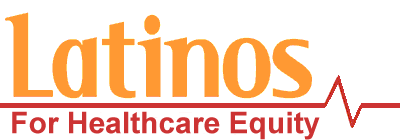« No Reason to Demonize U.S. Single-Payer Health | Main | Health Care Interpreters: Medical Necessity »
Fight Over Public Plan Option Dominates Ways and Means Hearing
By admin | March 11, 2009
CQ HEALTHBEAT NEWS
March 11, 2009 – 5:17 p.m.
By Rebecca Adams
The House Ways and Means Committee bickered along party lines in a Wednesday hearing about the need to create a public plan option for the uninsured in legislation to update the nation’s health care system. The debate underscored the controversy that continues to surround the public option proposal and the level of difficulty that Congress will have in resolving this and other differences in order to meet Democrats’ goal of sending a health care bill to President Obama by the August recess.
Democrats, led by Chairman Charles B. Rangel of New York and Health Subcommittee Chairman Pete Stark of California, argue that a public plan would have lower administrative costs than commercial insurance, avoid giving insurers or providers too much power, and provide an important safety net. Republicans such as top panel Republican Dave Camp of Michigan say that private insurers would never be able to compete with the negotiating power of the national government and that a public plan would undermine employer-sponsored insurance.
After the hearing, a House Democratic committee aide expressed little hope that the two parties would reach an agreement on sharp differences such as the public plan option. “They’re girding for war on the other side,” said the aide.
Despite the many differences between the two parties on health care, House Democrats aim to mark up health care legislation in July in the Ways and Means, Energy and Commerce, and Education and Labor committees. They hope that their robust majority in the House and a more bipartisan process in the Senate will provide the votes to move legislation to the president’s desk before the August break.
At the hearing, Republicans brandished a recent report from Seattle actuarial firm Milliman, Inc., that suggested that lower Medicare and Medicaid payment rates to hospitals and physicians caused those providers to charge commercial insurance plans more for similar medical services. The cost shift to commercial payers was significant, the study said. If all of the payers had paid providers at the lower government rates, the study found, then commercial insurance payment rates could fall by 18 percent for hospitals and 14 percent for doctors.
The study was commissioned by health industry groups such as America’s Health Insurance Plans, the American Hospital Association, the BlueCross BlueShield Association and Premera Blue Cross.
If a public plan were created that offered medical providers lower rates than commercial insurance plans, Milliman principal John M. Pickering testified, then providers would face “tremendous pressure” that could become “untenable.”
However, the independent Medicare Payment Advisory Commission (MedPAC), which advises Congress on payment issues, challenged key parts of the study’s findings. In a statement released separately from the hearing, MedPAC questioned the study’s assumption that if Medicare paid providers higher rates, then hospitals would charge private insurers less. In fact, said MedPAC officials, hospitals seek rates that are as high as insurers will pay, regardless of the level of Medicare payments, and higher rates from private commercial insurance plans simply allow hospitals to spend money less efficiently.
“It is not reasonable to think that hospitals with market power will voluntarily lower the prices charged to insurers and reduce their revenue,” said the MedPAC statement. “Instead, hospitals might spend some or all of that revenue, resulting in higher costs.”
Throughout the hearing, Republicans invoked the study to argue that a public plan could cause more people to lose access to health care services.
But Pickering said under questioning from Rangel that actuaries and other professionals could probably find a way to design a public program that would not harm providers. And he also said providers could respond to a public program by finding ways to become more efficient.
Karen Davis, president of the private research foundation The Commonwealth Fund, emphasized that point. Moreover, she said, giving health care coverage to the nearly 47 million people in the United States who don’t currently have it could reduce costs for everyone. She advocated an expansion of both private insurance coverage and the creation of a public plan, defending the public program as a necessary component of health overhaul legislation “to make sure that our scarce federal dollars are used efficiently” by covering the uninsured through methods that have low administrative costs.
The third witness on the panel, Harvard Medical School professor and Institute of Medicine (IOM) committee member John Z. Ayanian, said that the most important thing for lawmakers to remember is that action of any type that can reverse the deterioration of the nation’s health care system is needed.
Both employer-sponsored private health insurance and public programs are under tremendous stress in the current economic downturn, he said. When patients lose insurance, their health is at risk. Ayanian cited a Feb. 24 IoM study that found that uninsured adults are 25 percent more likely to die prematurely than adults who do have insurance. Patients who have serious conditions such as heart disease or cancer face risks of premature death that are 40 to 50 percent higher, suggesting that the continued unraveling of the health system can be a death sentence for some Americans.
“There is no evidence that the trends will reverse without concerted action by policymakers,” said Ayanian.
Source: CQ HealthBeat News
Topics: Uncategorized | No Comments »
Comments are closed.

